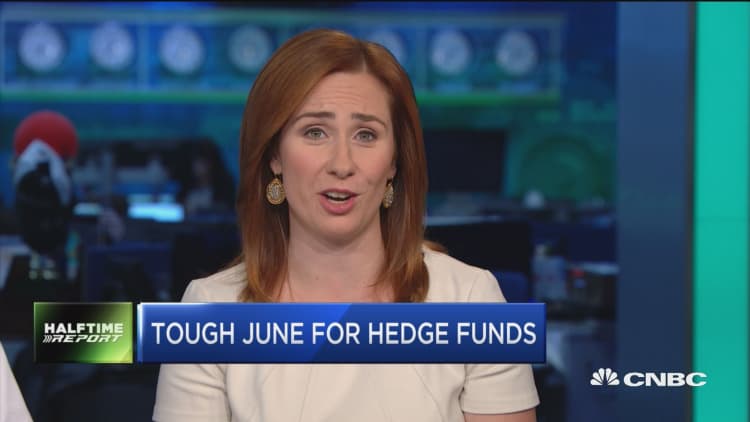
The hedge fund industry's storied 2-and-20 fee structure finally may be on its way out.
After years of underperformance and in the face of growingcompetition elsewhere for the deep-pocketed investor's dollar, hedge fund investors are clamoring for lower costs. The current structure, which charges 2 percent of assets annually and 20 percent of return, has long been a sticking point, but the demand for change has grown in recent years.
"Looking forward, you've seen this huge trend on average fee-collecting for hedge funds declining. That trend is strong and it's going to continue going forward," said Donald Steinbrugge, managing partner of Agecroft Partners, an industry marketing firm. "There's going to be pressure on new funds coming out to be in line more with a 1½-and-20 model than a 2-and-20 model."
That sentiment is reflected in a recent survey of managers in the $3 trillion industry.
Industry tracker Preqin found 52 percent reporting that investors have grown more negative about the industry over the last 12 months. Of the more than 270 fund managers who responded, 43 percent said clients are citing fee structure as the primary concern, up from 28 percent in December.
That comes amid weak performance and a somewhat gloomy outlook, as just 15 percent said they met performance goals, with expectations evenly split about the future.
Market "valuations are above historical levels," Steinbrugge said. "That is also causing investors to negotiate fees, because they believe the returns from hedge funds are going to be lower going forward than they were five years ago."
Though the industry has eked out gains over the past four months, it still trails the broader market.
The HFRI Fund Weighted Composite Index, used as a benchmark for industry performance, gained 1.63 percent through the first half of 2016. By comparison, the stock market index rose 3.82 percent in terms of total return.
Hedge funds, however, continue to attract investor cash, though at a slower pace than passively focused exchange-traded funds. ETFs now narrowly trail hedge funds in total assets and have pulled in about $118 billion in fresh investor cash this year.
"Managers recognize that in order to retain investors and continue to receive new capital, they will need to overcome significant investor concerns about the asset class," Amy Bensted, Preqin's head of hedge fund products, said in a statement.
As things stand now, the larger the investor, the better chance of negotiating on fees. Clients with $100 million already are getting discounts that can reach half off the standard 2-and-20 structure.
It will be a tougher slog for those who have only a few million on hand, though that dynamic is changing.
"The person who's allocating a million dollars, they're pretty much going to have to accept what the standard fee is in the documents," Steinbrugge said, though he added that institutional customers have more leverage with fund managers.
"The industry used to be dominated by family offices and super-high net worth individuals. Today's it's dominated by corporate pension funds, public pension funds, sovereign wealth funds that are used to aggressively negotiating fees with managers," he added.
Hedge funds have to be careful, though: Cutting fees too much actually can be counterproductive.
"I still see investors willing to pay if they think the hedge fund can deliver performance," Steinbrugge said; "Those hedge fund managers who come out with really low standard fees, I don't think it helps them. As a matter of fact, it often does the opposite. People view it as a lower-quality organization."


